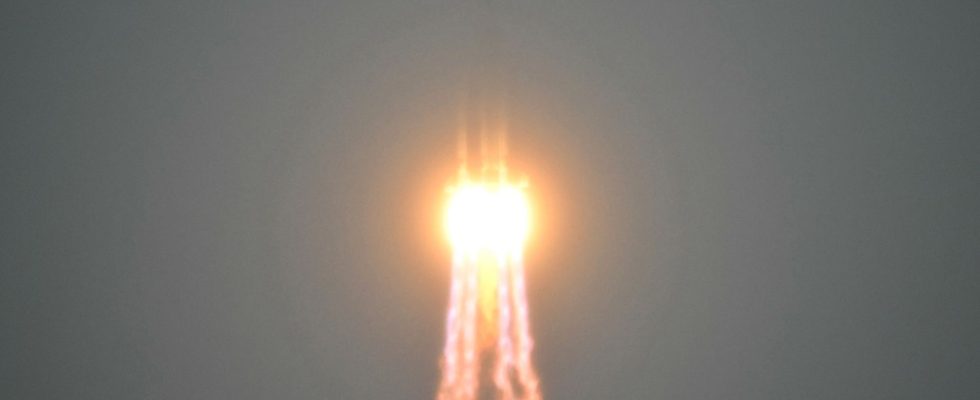The Franco-Chinese scientific instrument DORN is dedicated to measuring radon, a radioactive gas permanently produced in lunar soil.

Published
Reading time: 2 min

A little bit of France in the luggage. The Chinese Chang’e 6 probe flew to the Moon on Friday, May 3, to explore its hidden side and bring samples back to Earth. On this occasion, it is taking on board a Franco-Chinese scientific instrument, the first ever sent by France to the lunar surface. DORN (Detection of Outgassing RadoN) is one of four foreign instruments traveling aboard Chang’e 6, which is scheduled to land in early June in the Aitken Basin near the star’s south pole.
The 4.5 kg instrument is dedicated to measuring radon, a radioactive gas produced continuously in the lunar soil (called regolith) by the disintegration of uranium, specifies the National Center for Space Studies (Cnes) who is leading the project. For the first time, the instrument will measure the concentration of this gas present on the surface, which will make it possible to study the extremely tenuous atmosphere of our natural satellite called the exosphere, adds the French space agency.
An observation on the mobility of radon
Scientists will also study how radon travels on the lunar surface, “where its lifespan is only five days”, explained Pierre-Yves Meslin, scientific manager of DORN, named after the physicist Friedrich Dorn who discovered radon. The idea is to understand “the mobility of this gas in the lunar environment, to then be able to establish transport models and apply them to more complex elements such as water molecules”explained this researcher from the Institute for Research in Astrophysics and Planetology (Irap) at the end of April.
Live at 10:30 a.m.: the launch of DORN aboard a Long March 5 rocket from the Wenchang space center 🇨🇳 Embarked on the Chinese Chang’e 6 lander, it will soon be the first instrument 🇫🇷 active on the surface of the moon.
Follow on https://t.co/mwtzo8OCEl pic.twitter.com/2Nn4FwBoKl— CNES (@CNES) May 3, 2024
The Moon is known to contain water ice, hidden in craters in cold polar regions where it is protected from sunlight. But it’s unclear in what quantity, as space agencies see lunar water as an essential resource for future human settlements. It is therefore crucial to understand “how water molecules and gases in general, which are produced in warm regions, manage to reach cold regions”to arrive “ultimately evaluate the quantity of water”said Francis Rocard, astrophysicist at Cnes.
DORN will only operate for around thirty hours on the surface, before completing its observations from orbit. “It’s short but it will be enough to make much more sensitive measurements than previous satellites”, underlined Pierre-Yves Meslin. France has “good hope” that China will provide samples that Chang’e 6 will bring back to Earth, to analyze them in the laboratory, notably at the Atomic Energy Commission.
